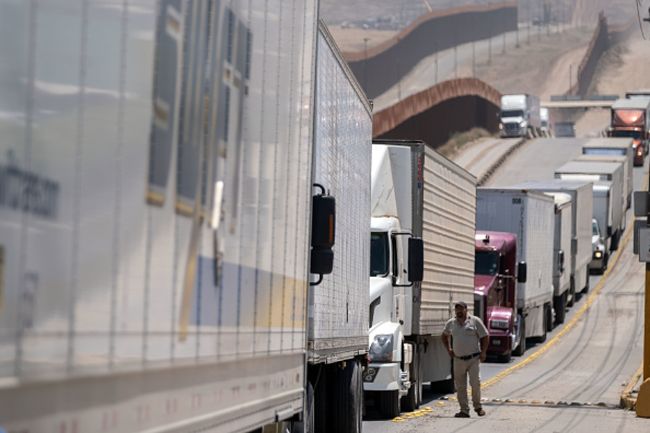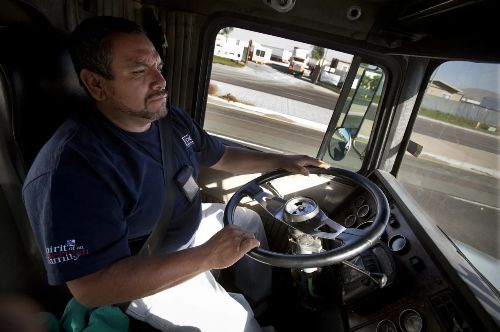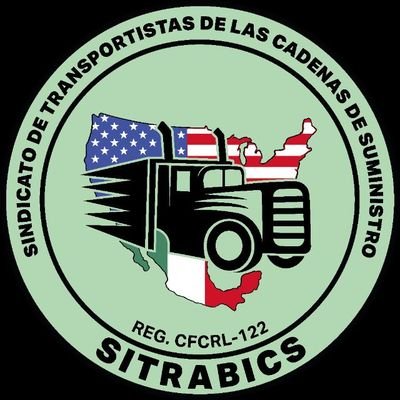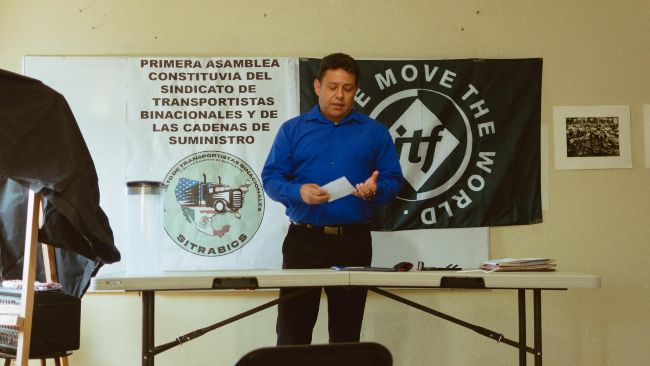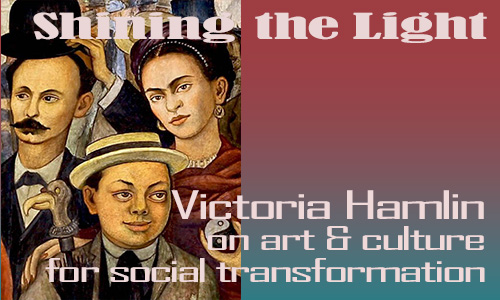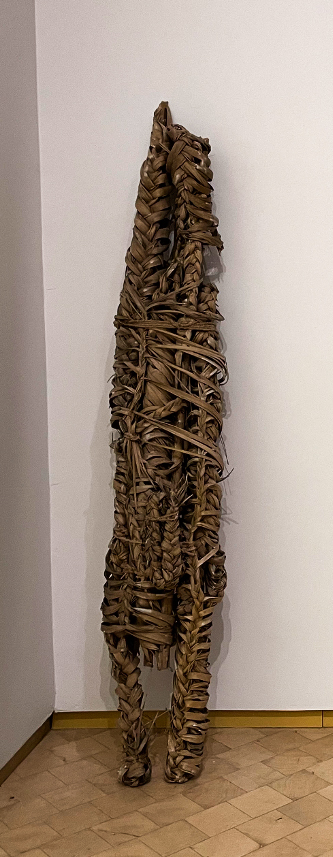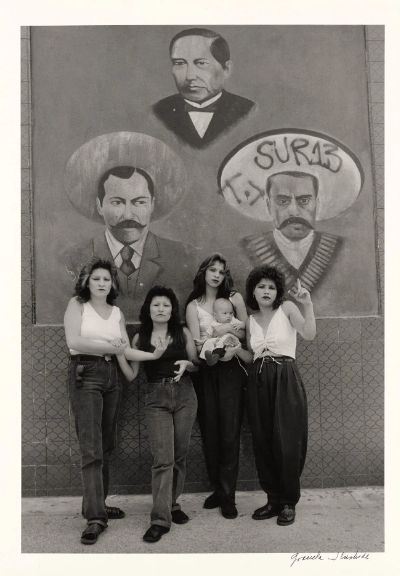|
|
The weekly newsletter of the Mexico Solidarity Project |
|
Every issue archived online at mexicosolidarityproject.org/archives/ |
|
July 16, 2025 |
|
|
|
Peaceful Solitude — or Solitary Confinement? |
|
Meizhu Lui, for the editorial team |
|
|
Guillermo Arias/Getty Images |
|
Skillfully maneuvering a huge machine over long distances and in tight spaces. Enjoying the solitude inside a truck cab. The job of transporting transnational cargo is something Jesús Iturbero, whom we hear from today, loves to do. But when crossing the Mexico-US border, pressures from both countries have spoiled that kind of job satisfaction. In particular, his employer has made his peaceful time in the truck cab more like solitary confinement in a prison cell.
Some time ago we interviewed farmworker organizer Rosalinda Guillen, who said that many Mexican farmworkers, once farmers themselves, loved being out in nature with their hands in the soil. But the growers with their harsh conditions and toxic methods knocked that love out of them. Beyond being underpaid and overworked, perhaps the worst thing that employers steal — is the joy of work.
The main tool workers have for fighting back is a union. Jesús was excited by the possibility of forming a real union, one run by and for workers and not by and for a crooked union boss in collusion with the employer. But much easier said than done. For four years, it’s been like driving down one blind alley after the next, without GPS! He’s now waiting for an answer to his complaint under the USMCA that his right to organize was violated.
How do we think the made-in-Mexico auto parts we need get to us? We suppose they get here in trucks. But we don’t think about the person who drives the trucks. Jesús takes us with him on the journey. For all of us who want or need products from Mexico, we can join his fight to make what he loves to do a respected, valued, joyful occupation. |
|
|
|
|
Cross-Border Truckers: A View from the Cab |
|
Jesús Iturbero Salinas has been driving trucks for 34 years, 22 within Mexico and 12 across the border from Mexico to the US. In 2021, he began his campaign against his employer, the Liber Gennesys Group, which transports Hyundai parts made in Tijuana into the US. Even after being fired for organizing an independent union, Jesús kept fighting, resulting in his co-workers getting a pay raise. After four years, he finally officially registered SITRABICS, the Supply Chain Transport Workers Union. The company continues to stonewall, and the union has filed a Rapid Response Mechanism under the USMCA. |
|
|
What led you to work as a transnational long-haul truck driver, transporting goods across the US-Mexico border?
For 22 years, I drove a passenger bus for several companies. The roads were dangerous, and the pay was low. We were in a union, but the union didn’t do anything for us, and the union boss controlled us like a mafioso.
In 2015, I heard about an opportunity to haul Hyundai parts across the US-Mexico border for a Mexican company. I thought the work would be less dangerous and the pay better.
Have working conditions changed since you got the job?
I’m 56 years old and have spent 34 years driving trucks. I love the job. We used to make good money, but now, in many cases, we don't even get paid. The companies accuse us of using too much fuel, and they deduct it from our pay; they charge us for damages in case of any accident. Everything bad that happens is the driver’s fault, and when you finish a trip, instead of getting paid, you find that you owe the boss! |
|
Because many illegal things cross the border in trucks — including drugs and migrants — pressure on truck drivers has increased.
Tighter enforcement of US cabotage laws has hurt us. Cabotage is the right to transport, and our specific right is to transport cargo from Mexico to the US. We can’t make trips within the US; that’s done by US drivers. But if a Mexican driver unloads a delivery, for example, from Mexico in New York, our companies often order us to make additional deliveries within the US, which is illegal. |
|
|
United States-Mexico Cross-Border Long-Haul Trucking: courtesy of Adina Moloman: Made in Mexico, Tecma Communications, 2015 |
|
Since we make only a fraction of what US truckers make, it’s no wonder that US and Mexican companies prefer to have us make deliveries. Obviously, this hurts US drivers too. |
|
|
Trucking and transportation operators in the U.S. and Mexico have been violating cabotage rules. Photo:Jim Allen/FreightWaves |
|
If the worker refuses, his superiors may retaliate and punish him — for example, by leaving him to wait for weeks in a foreign country, far from home, without resources or support. He may also be fired and blacklisted from the industry. If a truck driver is deported, the company isn’t sanctioned. They just hire another worker, and the vicious cycle continues. Only the worker suffers.
But we weren’t doing anything wrong! For example, if you didn’t look straight ahead, you could be charged with "distracted driving." If you looked down to get your cup of coffee or look at the instrument panel, a loud alarm would go off to "wake you up," and you were accused of falling asleep. When they installed the surveillance equipment over our protests, that’s when we started thinking about a union.
Since the drivers work alone, how did you organize a union? |
|
|
Cross-border trucker: Photo courtesy Sandra Dibble, San Diego Tribune, 2016 |
|
Our jobs are unique. Yes, it’s difficult to organize when drivers work alone in their trucks and never see each other. We had about 100 drivers in our company, and I had to track them down and talk to them one by one. |
|
I asked them to sign up for the new union and to keep it secret, which half the drivers did. But the company found out — someone ratted us out.
They fired seven of us; that was four years ago. Other drivers got scared, and many withdrew their support. I couldn’t get our union registered — 30% of the workers have to sign up. But I learned we could form a national union if workers from at least two states and two companies signed up. I stood at the border where the trucks pass through, talked to the drivers, and got enough signatures to form SITRABICS as a national union.
When you were fired for union organizing, did you go to the Mexican labor department? And recently, you filed a Rapid Response complaint under the USMCA.
The Mexican labor department did nothing! The Conciliation and Arbitration Board in Tijuana is corrupt. My company manager publicly stated that if we fought them, we could forget it, because the company and Hyundai had the resources to buy off anyone we asked for help. And that turned out to be true.
Our last resort was to file a complaint with the US Department of Labor and the US Trade Representative, which is our right under the USMCA. A good thing is that since we are transnational, we have the support of the Teamsters who do the same work from the other side of the border. They have media, financial and political resources. The US-based group ReThink Trade has good lawyers and experience in labor disputes, and they joined the complaint too. At our press conference announcing the complaint, people in the Mexico Solidarity Project and other pro-labor groups in San Diego joined us. Supporting SITRABICS has become a binational effort. |
|
|
SITRABICS logo |
|
|
Rethink Trade logo |
|
|
Teamster logo |
|
You have shown a lot of courage in the face of all the obstacles. What makes you so determined to form an independent union?
In 2019, after my negative experience with the charro union “representing” drivers for the passenger bus company, I heard about the new labor law passed under AMLO, and I was excited about the possibility of forming a democratic, worker-led union. I researched it, wrote up by-laws, and my son designed the logo. |
|
|
But I’ve learned a hard lesson. The process of achieving greater rights can ruin activists' lives. This fight has drained me. Financially, I put all my money into the campaign, and since being laid off four years ago, I haven't been able to work. I’m also emotionally drained. After I spoke up about poor pay and conditions, the company offered a raise to workers and told them to give up the union drive. Several turned against us, and others just waited it out with a low profile so that they wouldn’t be fired. That hurt.
The bright spot for me is the solidarity of other Mexican workers and the international solidarity I’ve experienced from people who share my goal of building real workers' power. Now that the RRM is filed, some workers in my company who left our union ranks and looked at me like a fool have come back around. I’m feeling more hopeful again. |
|
Breaking News! |
|
Update: July 14, 2025:
SITRABICS complaint accepted by the
US Trade Representative and Department of Labor!
|
|
|
|
|
Cooking Up a Better World |
|
|
Activist Vicky Hamlin, a retired tradeswoman, shop steward, and painter, shines the light — in her art and in this column — on the lives of working people and the world they live in. |
|
|
How did some of us in the USA get so insular, so hateful, so xenophobic?
When I was growing up in New York City, we lived among people from many different places. Walk down a block, turn the corner and hear Italian, Polish, Puerto Rican Spanish, Haitian French and Creole, Caribbean and African languages. It was normal, easy, interesting. Xenophobia has always existed undercover but has now been given free rein by Trump and the Alt-Right. I miss a world view that values, enjoys, has pride in, “diversity.”
The Mexican diaspora didn’t always include NYC in a big way. But now it’s part of the migration surge up and down the American continents. In the US, Puerto Ricans call themselves “Nuyoricans” or “Diasporiicans”; for Mexicanos/as it’s sometimes “Diaspicanos/as.” A young man told me that people from Puebla, a city in Mexico, called New York “PueblaYork.” And conversations about diaspora and migration have exploded.
Recently, I saw a show at the Museo del Barrio in the Bronx (NYC) called Flow States, La Trienal, where Latin(x) artists from 33 countries examined issues of diaspora and identity.
The work is as varied as the artists and communities it comes from.
Here, I’ve highlighted some of the pieces by artists connected to Mexico, especially artists who chose to look at people in their own surroundings. Mexican flavors for sure! |
|
Carmen Argote’s pieces, Exile 1, 2, and 3, use palm fronds and other natural elements to depict human bodies interacting with both natural and constructed worlds. The natural environment is implied but clear. Also shown here are “ Protector: Surrender and Protector:No, mixed media. |
|
|
Carmen Argote, (L to R) Protector: Surrender, Protector: No, Exile 3 |
|
|
|
Christina Fernandez, Suburban Nightscape #1 (Max and Diego) |
|
|
Christina Fernandez, Suburban Nightscape #3 |
|
Christina Fernandez uses color in her photos to pump up the action just a bit. She shows us familiar people and places in a different light, literally. |
|
Roberto Gil de Montes is a painter’s painter; paint is his friend. Landscapes tweaked and adjusted, people we think we know — all painted with luscious, fluid strokes. |
|
|
Roberto Gil de Montes, Jaguars and Time, Boy, Boy with Mask |
|
Two other art events that added spice to our migration stew recently came to my attention: the monumental piece by Teresa Margolles in London and Picturing the Border, a photography show at the Cleveland Museum of Art, |
|
|
Teresa Margolles, "Mil Veces un Instante (A Thousand Times in an Instant)" (2024): Photo: James O. Jenkins, courtesy James Cohan Gallery, NYC |
|
|
Graciela Iturbide, “Cholos, White Fence, East Los Angeles” 1986: Photo: courtesy J. Paul Getty Museum, city of LA Cleveland Museum of Art, Picturing the Border |
|
We highlighted Margolles’ powerful work in our Mexico Solidarity Bulletin #23 — now her work has truly gone global.
And the spectacular show at the Cleveland Museum puts photography in its rightful place as a most powerful tool for a better world with a show of 12 powerful cross-border artists.
In my opinion, the ever-expanding melting pot makes a glorious stew. Let’s keep that recipe alive with new flavors from Mexico and the world! |
|
Don’t miss an issue! Sign up for a free Mexico Solidarity Bulletin subscription.
For a deeper dive into current news and analysis in English, check out our media website and the podcast ¡Soberanía! (Sovereignty) with José Luis Granados Ceja and Kurt Hackbarth. New episodes will now arrive weekly on Wednesdays, not Tuesdays.
Sin Muros from José Luis and Kurt is a weekly Spanish language Mexican TV show on Canal Once that analyzes Mexico-US relations. It's also on YouTube, with English subtitles.
And those of you with mad skills and/or interests we want to hear from you! Get in touch to find ways to plug in to the work. Drop a line to meizhului@gmail.com |
|
|
Recent news reports and commentaries, from progressive and mainstream media, |
|
Trump’s latest tariffs ‘are real’ unless deals improve, economic adviser says The Guardian. Kevin Hassett says talks are ‘ongoing’ after US president announced 30% tariffs on goods from EU and Mexico.
Ernesto Villarreal, A 7 años del triunfo electoral que abrió las puertas a la transformación de México Eje Central. La experiencia de estos años nos enseña que, para generar y sostener los cambios, nos necesitamos todos.
Mexico Safer Under Claudia Sheinbaum: Homicide Rates Decline Telesur English. Since Claudia Sheinbaum took office, homicides in Mexico have decreased significantly, alongside a major crackdown on organized crime. Authorities have made thousands of arrests, seized a vast amount of drugs, and Sheinbaum has pledged new measures to combat extortion.
Lago de Texcoco: triunfo de la vida La Jornada. En suma, habitantes, expertos y organismos multilaterales reconocen el salvamento de la ecorregión del lago de Texcoco como un logro ambiental y social de primera importancia, y los únicos que a estas alturas defienden la nefasta idea de arrasar con los últimos restos del sistema lacustre de Anáhuac son quienes tenían intereses económicos en el proyecto de muerte del NAIM y aquellos tan cegados por su odio a la figura de López Obrador y a los gobiernos de la Cuarta Transformación que han perdido la capacidad de discernir entre los hechos y sus fobias ideológicas.
Emiliano Rodríguez Mega, Paulina Villegas and Simon Romero Why Are Protesters in Mexico City Angry at Remote Workers? New York Times. In 2022, when she was the city’s mayor, Ms. Sheinbaum signed an agreement with Airbnb to promote Mexico City as the “capital of creative tourism” — an effort to enhance the city’s reputation as a global hub for remote workers. At the time, Ms. Sheinbaum said she did not believe the company would increase prices for locals. But the problem had started years, even decades, earlier.
30% a México: EU Sin Embargo. Trump exige más contra cárteles y aumenta las tarifas. No estamos de acuerdo: Ebrard.
Alex Vasquez and Maya Averbuch, Mexico’s Next Top Judge Says Company Taxes Should Be Clear Cut Bloomberg. As Mexican courts embrace a new era following the nation’s first-ever election of judges, the Supreme Court’s incoming chief says one of his priorities will be to ensure fairness across the board — and that includes company tax obligations.
Nancy Gómez, Más allá de la Condesa Sin Embargo. En México, sobre todo en la CdMx, se discrimina por el tono de piel y no se reconoce.
Gloria Rebecca Gomez, Trump ‘border czar’ tells immigrants they ‘should be looking over your shoulder’ AZ Mirror. He waved away criticisms about civil rights violations and said that the plan will keep resulting in the arrests and expulsions of undocumented people without criminal records.
Sugeyry Romina Gándara, El Fiscal pretextos Sin Embargo. Desde su llegada, en 2019, Gertz Manero tuvo en la mesa investigaciones clave vinculadas al sexenio de Enrique Peña Nieto: la Estafa Maestra, el caso Odebrecht, los contratos con OHL, la compra del sistema de espionaje Pegasus y el caso Ayotzinapa, entre otros. La Fiscalía no ha logrado concretar ninguna sentencia relevante contra funcionarios públicos de alto nivel. |
|
|
|
|
The Mexico Solidarity Project brings together activists from various socialist and left organizations and individuals committed to worker and global justice. We see the 2018 election of Andrés Manuel López Obrador as president of Mexico as a watershed moment. AMLO and his progressive Morena party aim to end generations of corruption, impoverishment, and subservience to US interests. Our Project supports not just Morena, but all Mexicans struggling for basic rights, and opposes US efforts to undermine organizing and Mexico’s national sovereignty.
Editorial committee: Meizhu Lui, Bruce Hobson, Agatha Hinman, Victoria Hamlin, Courtney Childs, Pedro Gellert. To give feedback or get involved yourself, please email us! |
|
Subscribe! Get the Mexico Solidarity Bulletin in your email box every week. |
|
Web page and application support for the Mexico Solidarity Project from NOVA Web Development, a democratically run, worker-owned and operated cooperative focused on developing free software tools for progressive organizations. |

